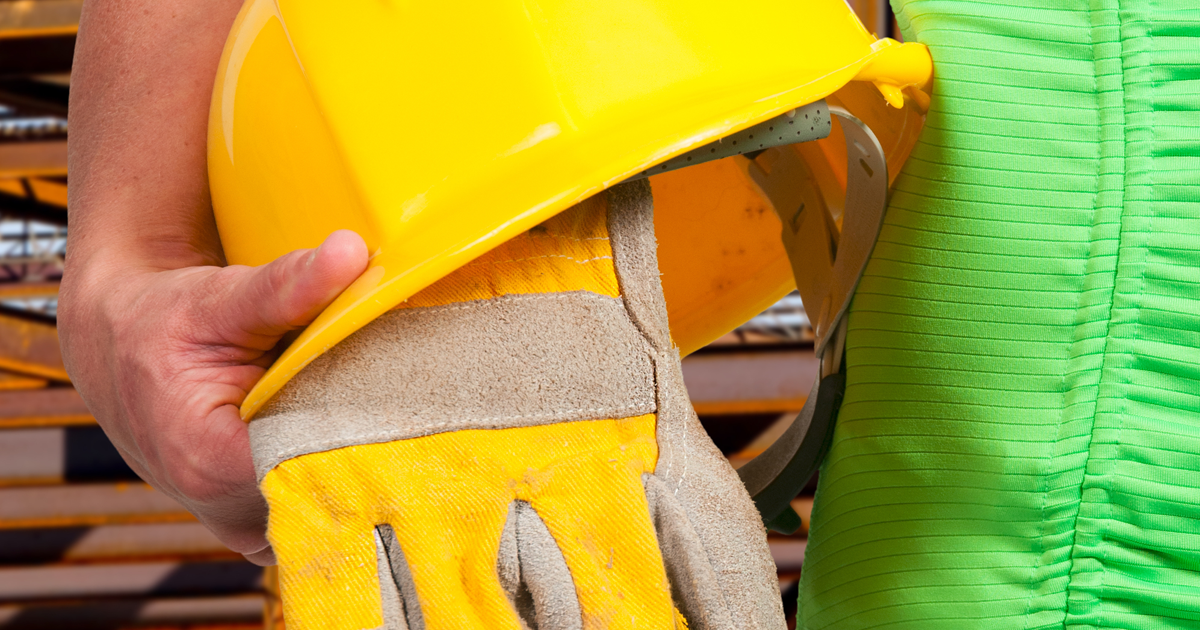What is PPE?
Personal Protective Equipment is any piece of clothing or equipment employees wear to protect from workplace accidents. These accidents could stem from radiological, chemical, electrical, physical, mechanical, or biological hazards. Examples of PPE include gloves, goggles, hard-hats, steel toe boots, and fireproof clothing.
Who wears PPE?
PPE is a vital component to a variety of occupations. The first thing that comes to mind when thinking of PPE are oftentimes construction and industrial occupations. These jobs often deal with heavy machinery, construction supplies, high heat, and moving parts that can easily crush bone or lacerate the skin. However, PPE is also found in jobs that deal with biological, chemical and radiological hazards. For example, doctors will wear masks when dealing with a contagious patient, and nurses will wear latex gloves when administering certain procedures. Various scientists and researchers will wear protective suits when dealing with bacteria, radiation, and dangerous contaminants. Landscapers even use PPE when they wear goggles to protect from flying gravel and sand whipped around by the lawn mower. Essentially, PPE is found in occupations within a very wide range.
What are the laws concerning PPE?
The Occupational Safety and Health Association has outlined requirements for PPE. These requirements focus primarily on the Construction industry, as well as General Industry. However, there are also requirements for the maritime industry, and shipyards. There are a few common PPE requirements throughout all of these occupations. For example, many require safety goggles, as well as protective footwear. Additionally, any occupation where employees are exposed to loud noise requires workers to wear hearing protection. Head protection is also required in any environment where workers are in danger of being hit by falling objects.
Employers are required to provide all PPE materials, albeit for a few exceptions. For example, two of these exceptions are protective footwear and prescription safety glasses. The reason these two materials are not required to be provided by the employer is due to their personal nature. These items are also quite versatile and can are used outside of the workplace. For this reason, although they are required in many workplaces, they are not included in the PPE that must be provided by the employer.
Who initiates PPE use?
The employer is responsible for assessing the hazards of the workplace, and thus requiring the PPE necessary to protect the affected employees. Additionally, it is the employer’s responsibility to maintain the adequacy of PPE. All PPE equipment, even the PPE owned by employees, must be suitable for the conditions. It is the employer’s responsibility to ensure the PPE is maintained, regardless of who supplied the equipment.
Personal Protective Equipment is crucial. Not only does it reduce the number of accidents that occur every year, but it also significantly reduces the severity of accidents that do occur. It is absolutely imperative that employers monitor and enforce PPE use around the jobsite, in any industry. If employees feel they are being put at unnecessary risk then they need to speak up and demand proper protective equipment. Do not let something as simple as a hardhat be the difference between living and dying. Employers need to require PPE, and provide it. Employees need to be responsible and wear it. Protect yourself.
In addition to providing and maintaining PPE for employees, employers can reduce workplace injury by raising safety awareness in their workplaces. We offer a great selection of accident free workplace signage that can do just that. A lost time accident sign with stoplights is a great way to alert workers that an accident has occurred. You may also be interested in tracking multiple teams with one of our custom safety record signs.





